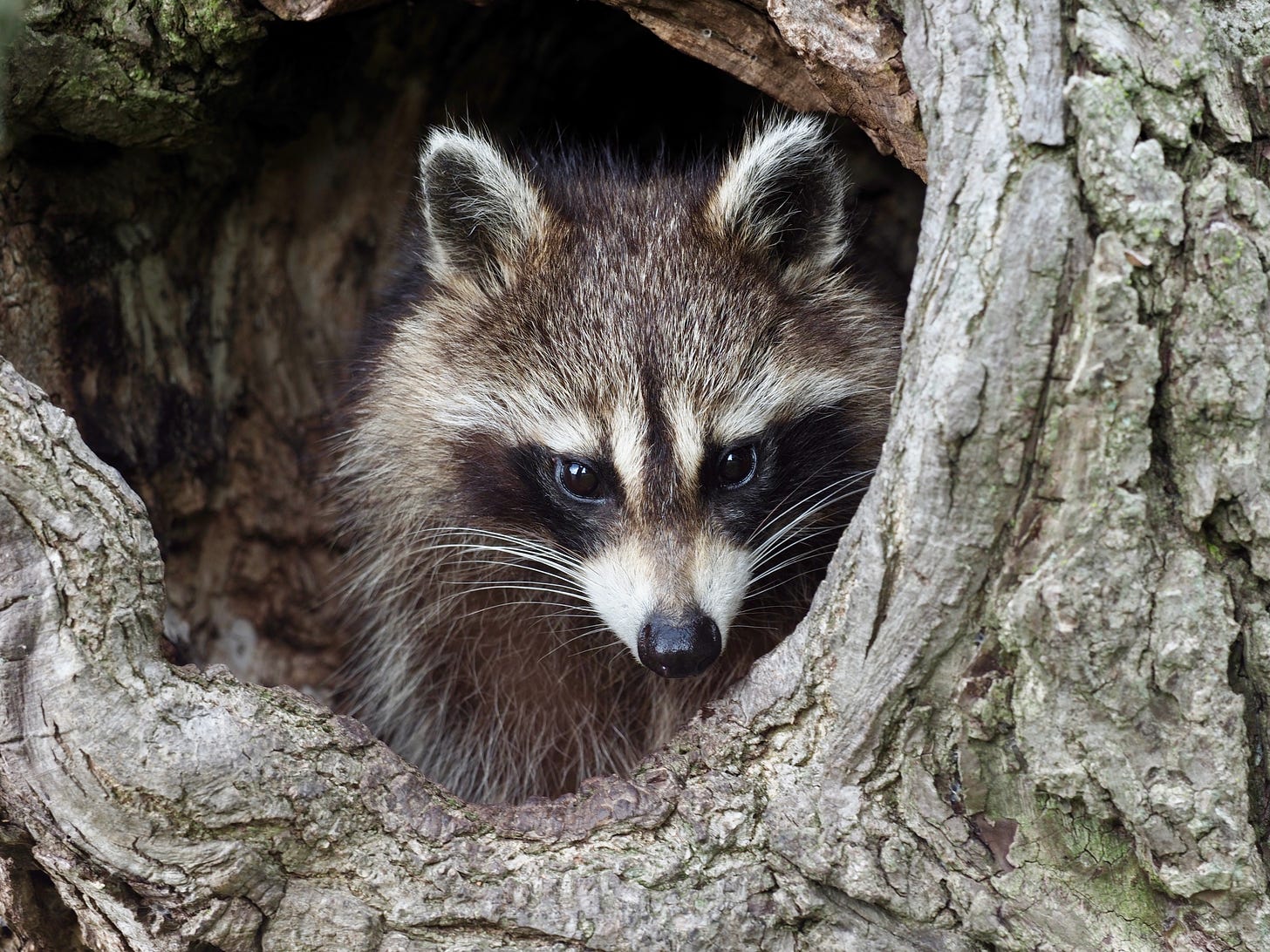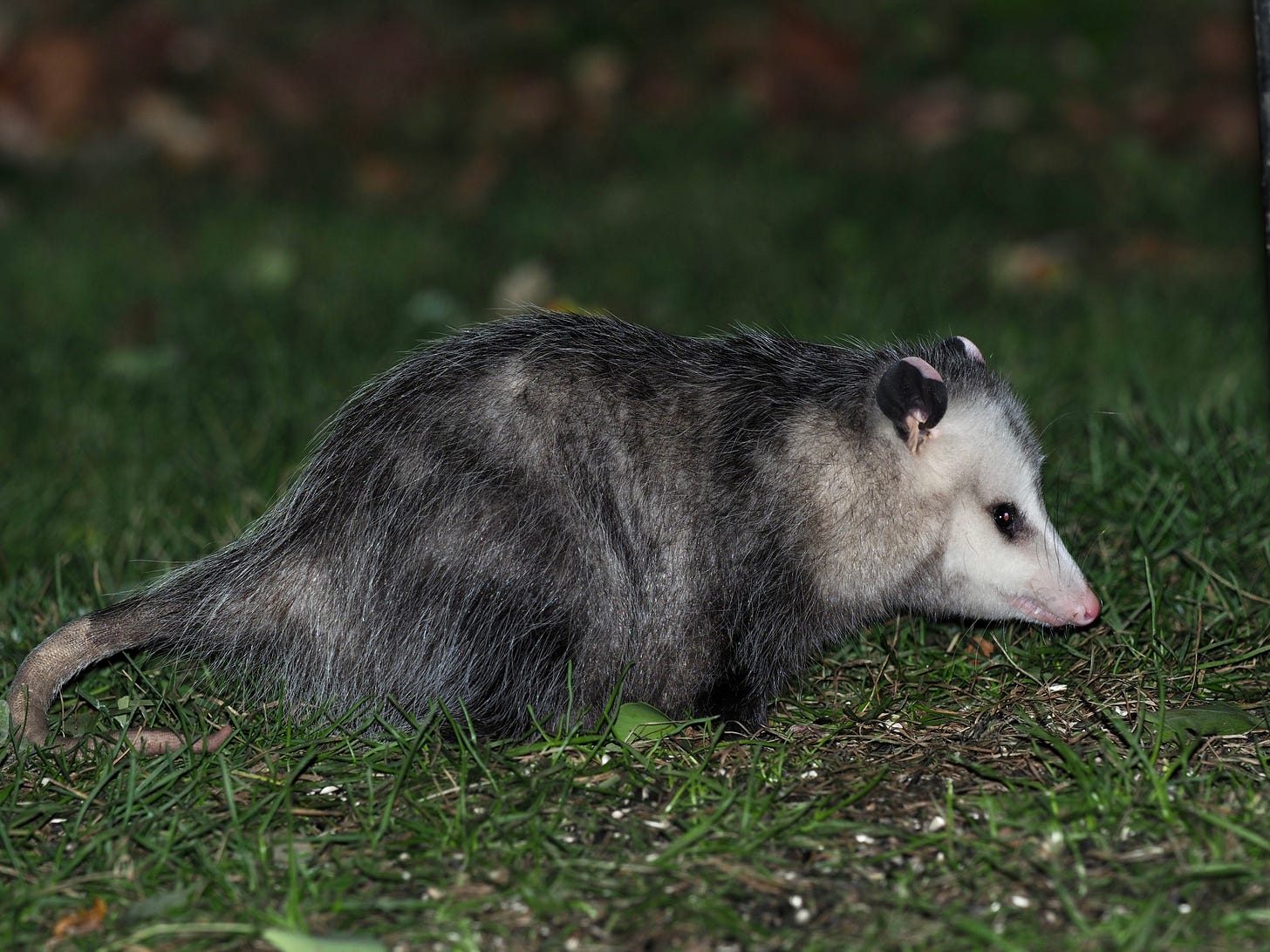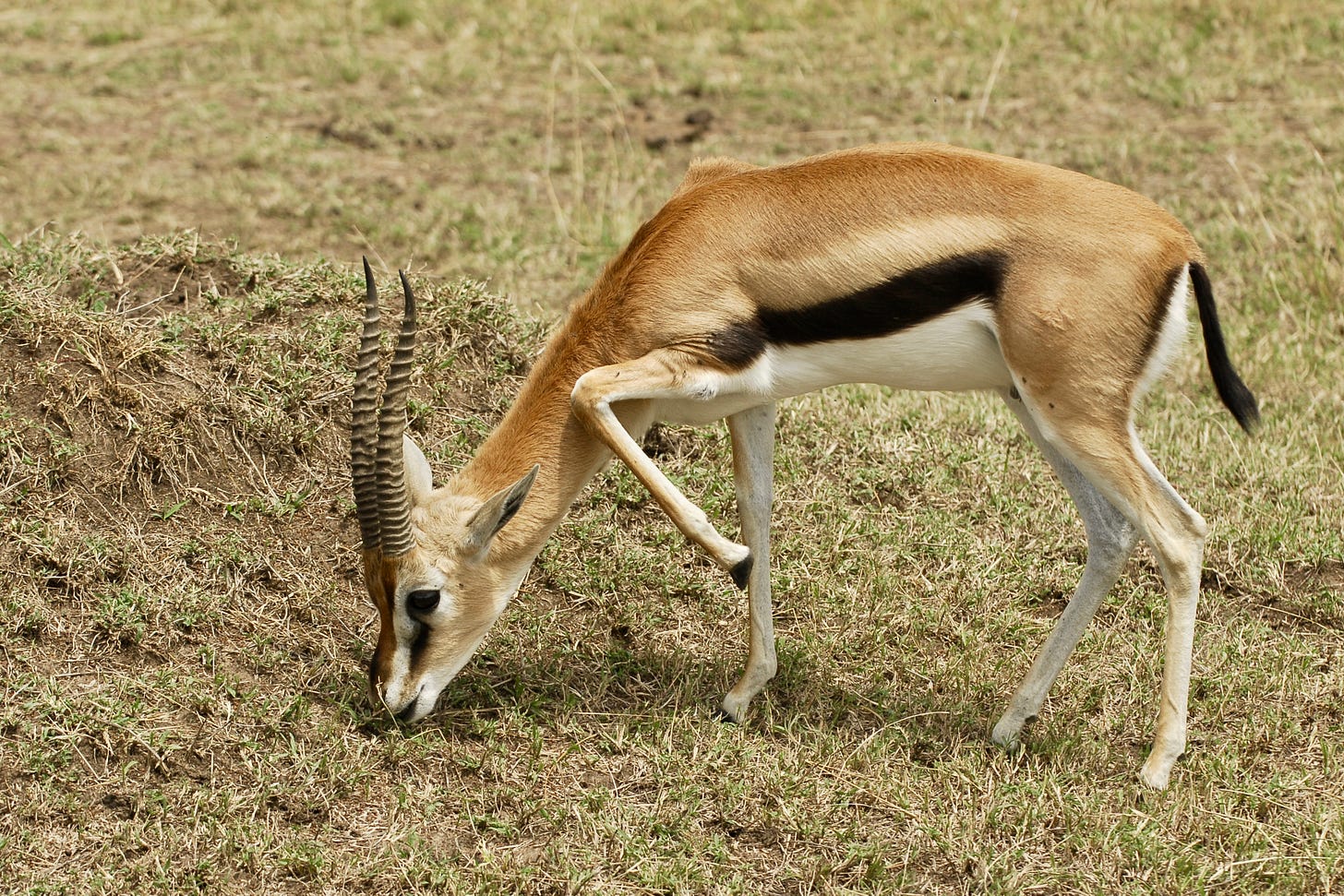
We’ve all seen it, glowing eyes caught in car headlights for an instant before their owner turns and slips off the road as we rush past. Eerie and interesting for us, wondering what it was, and likely scary for whatever animal was out on its nightly rounds. Henry Ford has a lot to answer for, and Cadillac for inventing electric headlights.
That’s the fascinating thing about humans—how many clever things we’ve created, and what we learn as a result. Until we figured out the use of fire we never would have spotted glowing eyes in the night, including those of predators sneaking up on us for a midnight snack.
Fast forward 250,000 years to LED lightbulbs, and Dennis’s bright new headlamp, which I happened to be wearing out in the yard the other night. Four a.m., warm and moonless, not many mosquitoes, and then a moth came fluttering in and landed on the wall right in front of me, where the beam happened to be focused. And in the brilliant light its eyes glowed a coppery red.
Eyeshine on a moth? Really? I knew about the layer of iridescent cells behind retinas of many nocturnal mammals and birds. By reflecting light back through, the shiny “tapetum lucidum” basically doubles the power of each arriving photon, greatly enhancing night vision. Cats, canines, ruminants and rabbits all have them, as do nightjar and owls. But moths are so miniscule, how could such a membrane fit in?
They don’t, of course. Like most insects, and spiders too, moths have bulging compound eyes, each with its own lens, instead of one big eyeball. I posed their eyeshine question to Dr. Google, who provided information about minerals that form crystals in certain creatures’ retinas, reflecting arriving light. Apparently each facet can appear to glow, depending on where the light is coming from. Why my copper-eyed moth seemed to keep glaring at me no matter which way I tipped the headlamp. And why we might see dozens of spider eyes shining in a meadow if we wander through waving a flashlight, something I want to try first chance I get.
I talked about the topic with friends, some of them experts in their fields. Dave Beadle, author of three major field guides to moths, mentioned finding sphinx species by their eyeshine. Glenn Coady, who’s found more new species for the Thickson’s Woods checklist of birds than anyone, told me of locating whip-poor-will nests on the forest floor by the incubating female’s eyeshine, since all nightjars have eyes that glisten in a beam of light, common pauraques of Central and South America the brightest of all.
And wildlife photographer Mike McEvoy, who generously sent me pictures of several animals whose eyes can shimmer in the dark, regaled me with tales of his adventures in Africa, going out on game watches by night and seeing dozens of shining eyes as herds of antelopes glanced up from grazing, before racing away.
Speaking of which, I heard a bumping sound near the garden shed when I was out there the other night, and turned toward it. Two blazing eyes stared back at me, caught in my headlamp beam. A raccoon going about its business.
...









Eyeshade fascinates me, too, Margaret! Also, thanks for giving me a perfect substitute for "game drive" which I kept hearing while I was in Africa. I'm going to promote "game watches" every chance I get.
New to me too! Fascinating, Margaret!